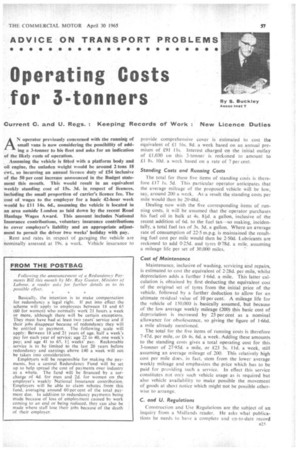FROM THE POSTBAG ,
Page 59

If you've noticed an error in this article please click here to report it so we can fix it.
Following the announcement of a Redundancy Payments sill this month by Mr. Ray Gunter, Minister of Labour, a reader asks for further details as to its possible effect.
Basically, the intention is to make compensation for redundancy a legal right. If put into effect the scheme will apply to employees between 18 and 65 (60 for women) who nOrmally work 21 hours a week or more, although there will be certain exceptions. They must have had at least two years service and if their jobs disappear because of redundancy they will be entitled to payment. The following scale will apply: Between 18 and 21 years of age, half a week's pay for each year of service; age 22 to 40, one week's pay; and age 41 to 65, 11 weeks' pay. Reckonable service is to be limited to the last 20 years before redundancy and earnings above £40 a week will not be taken into consideration.
Employers will be responsible for making the payments, but a central Redundancy Fund will be set up to help spread the cost of payments over industry as a whole. The fund will be financed by a surcharge of 4c1. for men and 2d. for women on the employer's weekly National Insurance contribution, Employers will be able to claim rebates from this fund, averaging around 60 per cent of the total payment due. In addition to redundancy payments being made because of loss of employment caused by work coming to an end or being reduced, they can also be made where staff lose their jobs because of the death of their employer.




































































































